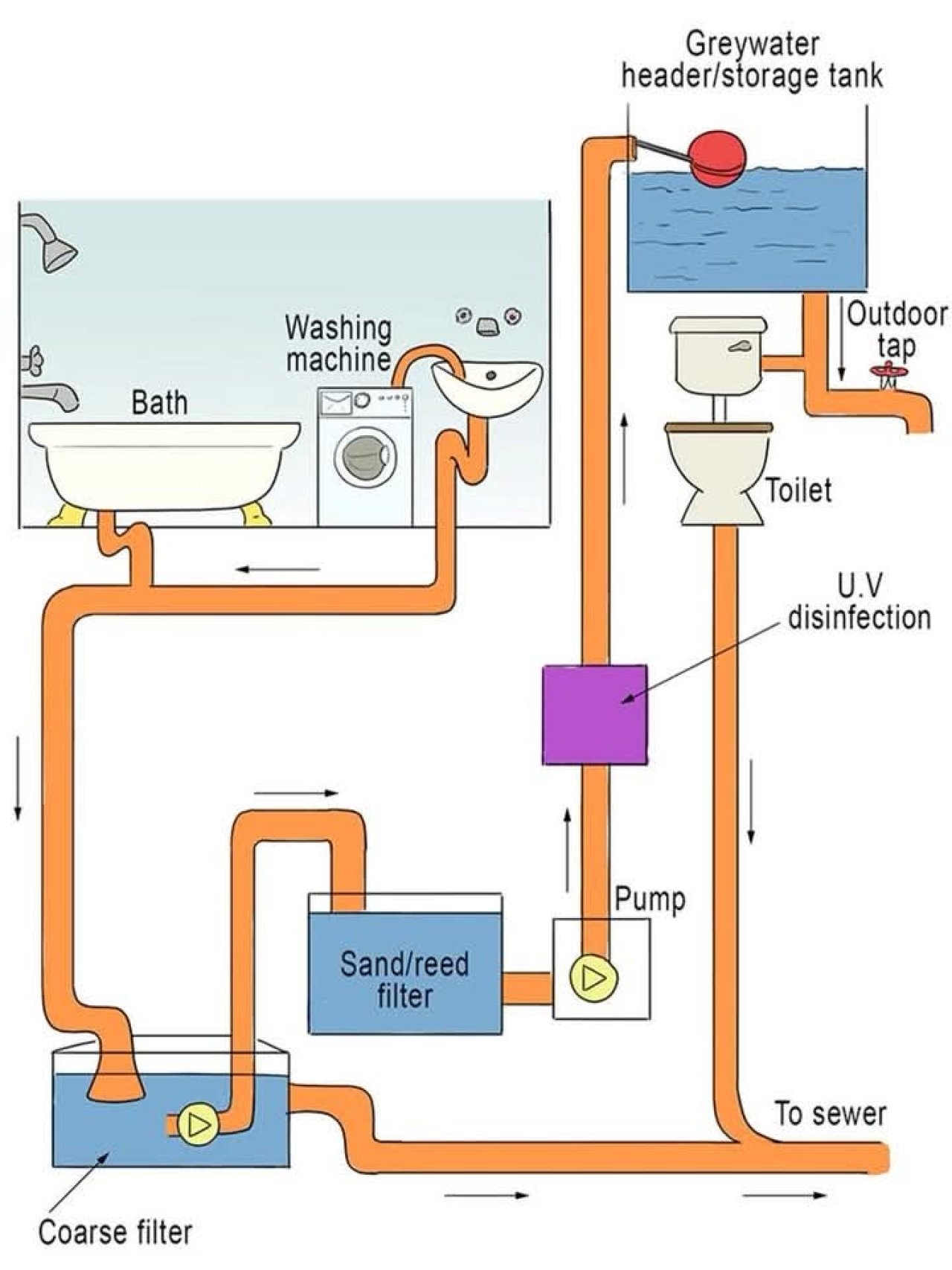RECYCLING OF WATER ...FROM GREAYWATER

illustrates a greywater recycling system. Let's break down the components and how it works: What is Greywater?
Greywater refers to wastewater generated from household activities like bathing, washing clothes, and dishwashing. It does not include sewage from toilets.
Key Components of the System: Greywater Header/Storage Tank: This component collects greywater from various sources like the washing machine, bath, and shower. Coarse Filter: This removes large particles from the greywater.
Sand/Reed Filter: This is a natural filtration system where the greywater is passed through a bed of sand and reeds. This helps to further remove impurities and contaminants. U.V. Disinfection: Ultraviolet (UV) light is used to disinfect the water, killing any remaining bacteria or viruses.
Pump: The pump moves the greywater through the filtration and disinfection stages. Outdoor Tap: The treated greywater can be used for outdoor purposes like irrigation or flushing toilets. To Sewer: The system may also have a connection to the sewer system as a backup or for excess water.
Benefits of Greywater Recycling: Water Conservation: Reduces water consumption by reusing greywater for non-potable purposes. Environmental Benefits: Reduces the amount of wastewater discharged into the sewer system.
Cost Savings: Can potentially reduce water bills. Important Notes: Greywater recycling systems require proper design and installation to ensure safety and compliance with local regulations. It's crucial to follow guidelines for disinfection and filtration to prevent health risks.
If you have any more questions about greywater recycling or other water conservation methods, feel free to ask!










